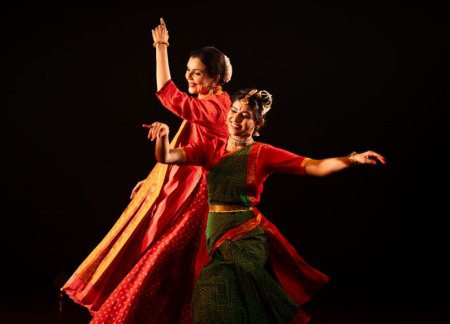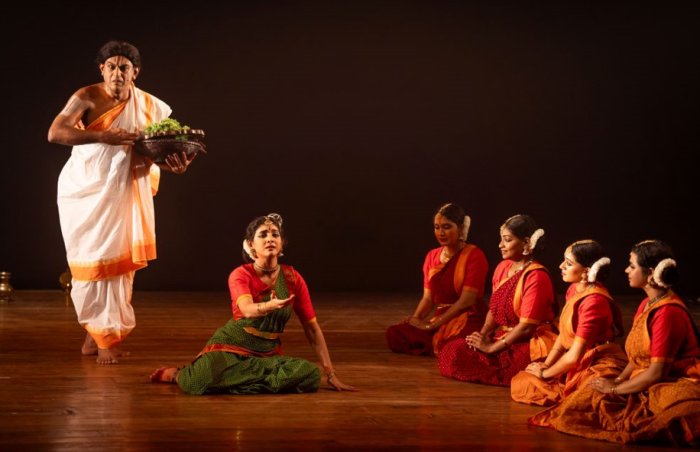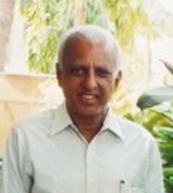
|   |

|   |
Naachiyar Next: An appreciation - Satish Suri e-mail: satishism@yahoo.co.in Photos: Rishi Raj April 9, 2025 The event stood as a testament to how artistic legacies could be honoured while simultaneously opening doors to fresh interpretations, allowing tradition and innovation to converse in dynamic harmony. By weaving reverence for the past with contemporary vision, such performances ensured that cultural narratives remained not just preserved, but alive, resonant, and ever-evolving.  Choreographed by Dr. Anita Ratnam, Naachiyar Next wove together dance, theatre, storytelling, and visual art into a mesmerising tapestry. Ratnam herself, shifting effortlessly between roles as sutradhar, mother, and dancer, anchored the performance with a quiet authority, guiding the audience through layers of myth and metaphor with a storyteller's precision. The opening scene lingered on the discovery of the infant Godhai beneath the Tulasi bush, her fate entrusted to Vishnuchittar, the temple priest of Srivilliputtur. The choreography captured this moment with delicate restraint - dancers swaying like tender basil leaves in the wind, their forms dissolving and reforming into feminine silhouettes, each movement a brushstroke in the unfolding visual poem. One of the most arresting sequences came when Godhai addressed the White Conch, her yearning as a girl on the threshold of womanhood rendered with both playfulness and piercing depth. Light and shadow played across the stage, sculpting the scene into fleeting, dreamlike tableaux, while props - minimal yet potent - heightened the emotional weight. Every element, from the rustle of fabric to the cadence of breath, felt deliberate, a note in a larger symphony. The choreography unfolded with breathtaking clarity, its lines sharp, its rhythms hypnotic. The kolattam sequence, with its rhythmic interplay of sticks and steps, became a celebration of communal grace, while the palanquin scene transformed the stage into a living tableau, vibrant and pulsating with unspoken narratives.  Nandini Subbalakshmi as Godhai, was luminous. Her portrayal balanced fragility with fervour, each gesture trembling with the rawness of first love and divine longing. When she moved, it was as if the verses of the Naachiyar Tirumozhi had taken flesh, her body a vessel for Andal's ecstatic devotion. The all-woman orchestra wrapped the performance in a soundscape as intimate as it was expansive. Their music - now a whisper, now a cry - mirrored the emotional arcs of the dance, the thrum of the mridangam echoing the quickening heartbeat of a devotee, the flute's lament like a soul straining toward the divine. Madhusudanan Kalaichelvan as the Araiyar, brought a solemn gravity to the stage, his every movement steeped in the ritual cadence of the Araiyar Sevai. In contrast, Shridhar Vasudevan as temple priest was stillness incarnate, his presence a quiet counterpoint to Godhai's fervid poetry. Together, their performances underscored the tension between austerity and ardour, the sacred and the sensual. Andal emerged not as a distant saint but as a woman alive with contradictions - playful yet profound, rebellious yet reverent. This interpretation refused to simplify her; instead, it invited the audience to sit with her complexities, to feel the heat of her longing and the chill of her solitude. By the end, Naachiyar Next had transcended performance to become an experience - a meditation on devotion, desire, and the act of creation itself. Anita Ratnam's choreography, at once meticulous and fluid, served as both homage and reinvention, while the ensemble's artistry breathed fire into every moment. Long after the lights dimmed, the echoes of Godhai's journey lingered, a whisper of something ancient yet urgently new.  Bangalore based Satish Suri is an avid dance rasika besides being a life member of the Music and Arts Society. |